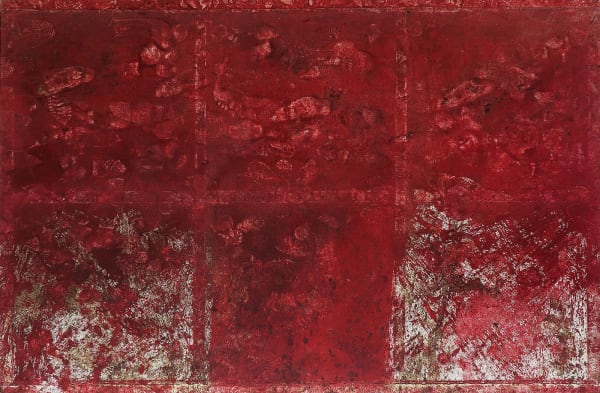Hermann Nitsch
Co-founder of the Viennese Aktionism movement, Hermann Nitsch was instrumental in reforming the face of sixties art, shunning the illusionary confines of traditional painting and sculpture, reinventing an art that exists in real, corporeal, and violent terms.
Hermann Nitsch was celebrated and reviled in equal measure as he took the semblance of a pagan ceremony and incorporated robed processions, symbolic crucifixion, drunken excess, nudity, animal sacrifice, the drinking of blood, and the ritualistic incorporation of viscera and entrails. Even today, his audiences aren’t mere visitors, but active participants in his artistic liturgies.
Hermann Nitsch’s work draws parallels between religion and the ritualistic spiritualism of creativity. Heavily entrenched in ancient philosophy and a dissident, questioning Christian theology, he actively seeks catharsis through pain and compassion, a rigorously disciplined quest for ethereal release and enlightenment through an embracing of primal instinct and ancient sacrament.
Hermann Nitsch (b. 1938, Vienna, Austria; d. 2022, Mistelbach, Austria) lived and worked at Prinzendorf Castle on the Zaya River, Lower Austria. His works are exhibited in the two Nitsch Museums in Mistelbach and Naples as well as in the Nitsch Foundation in Vienna and can be found in the permanent collections of preeminent international museums and galleries, including: MoMA, Guggenheim, The Metropolitan Museum New York, Tate Gallery London, The Centre Pompidou Paris, Pinakothek der Moderne in Munich and many more.
-
Stereo Sights and Sounds in Hyperallergic
July 12, 2023 -
Hermann Nitsch in Artnet News
August 12, 2022 -
Hermann Nitsch in The Art Newspaper
August 12, 2022 -
Hermann Nitsch at Tretyakov Gallery
September 1, 2020 -
Hermann Nitsch at Albertina Museum
April 3, 2019 -
Hermann Nitsch in The New York Times
October 31, 2018 -
Hermann Nitsch on Armory Live
April 25, 2018 -
Hermann Nitsch on ArteFuse
September 28, 2017 -
Hermann Nitsch 75th Painting Action, 2017
September 17, 2017 -
Hermann Nitsch at Dallas Biennial 2016
January 12, 2017 -
Hermann Nitsch in ArtNews
September 26, 2015 -
Hermann Nitsch on Vice
September 26, 2015
















